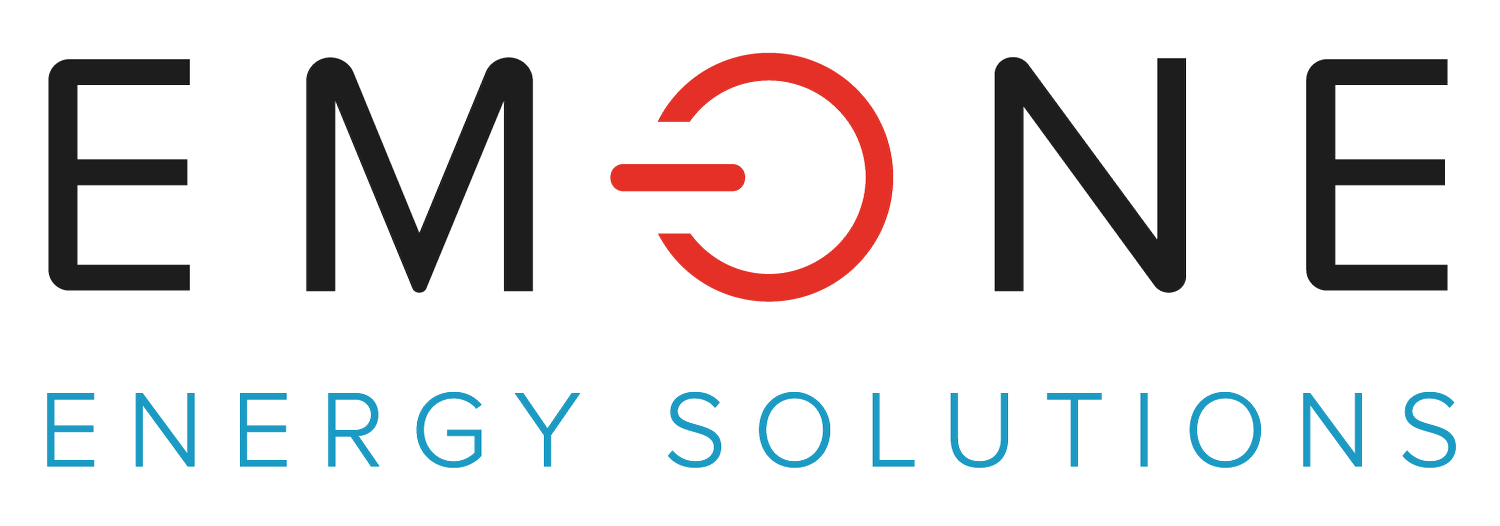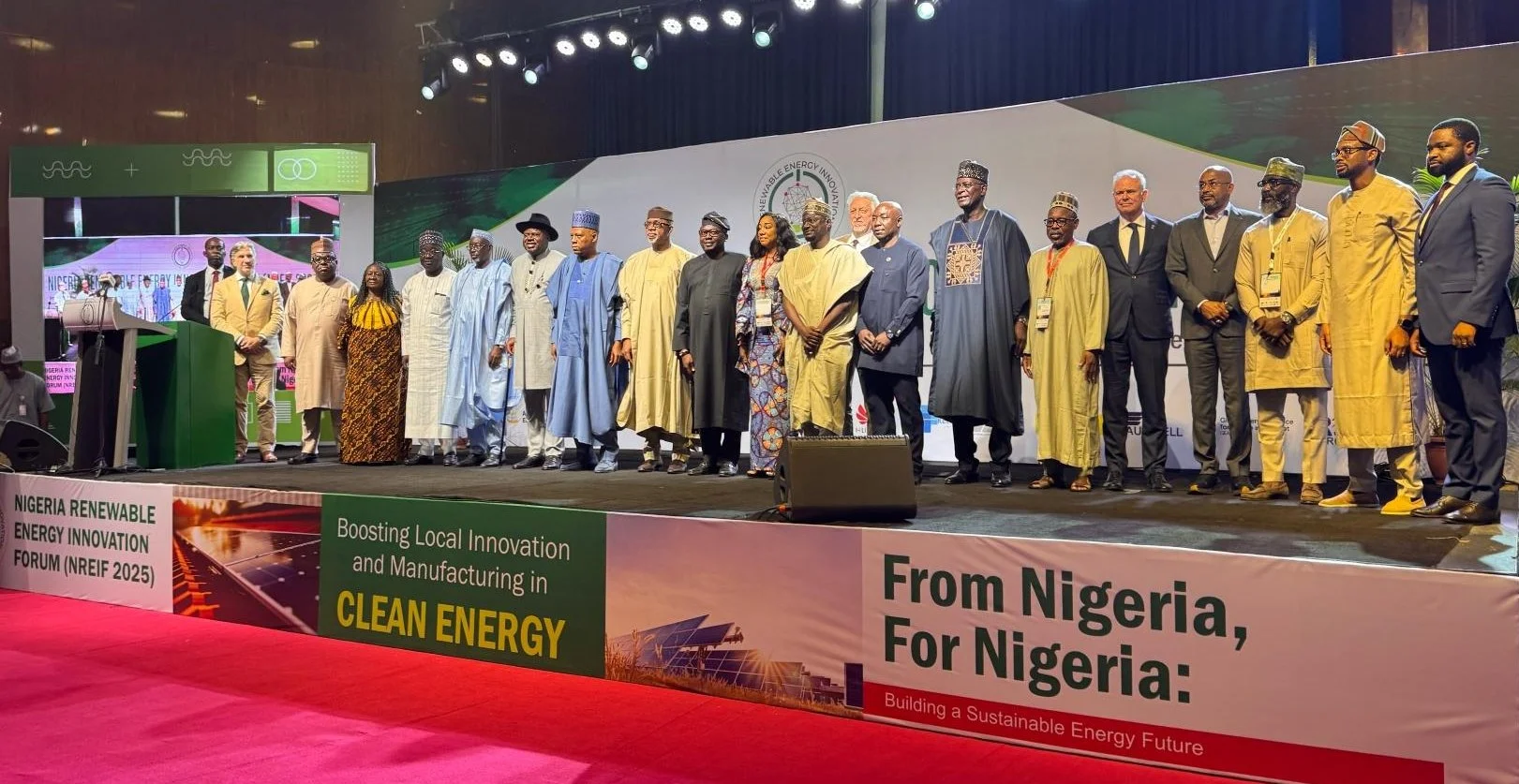Battery Storage - The Critical Enabler of Nigeria’s Energy Transition
Earlier this week, EM-ONE’s CEO, Mir Islam had the honour to participate in a panel on “Battery Storage and Nigeria’s Role in the Global Value Chain” at the Nigeria Renewable Energy Innovation Forum (NREIF) in Abuja hosted by The Rural Electrification Agency (REA) in partnership with GET.invest and the European Union.
From left to right: Chibueze Ekeh (CEO, CEESOLAR), Abdukadir Oladapo (CEO, Murty International), Olufemi Akinleyure (Head of Nigeria Electrification Programme, REA), Mir Islam (CEO, EM-ONE Energy Solutions), Mikel Valderrama (Off-Grid Business Developer, Cegasa Energia)
It was an engaging discussion on one of the most important topics in Africa’s energy transition: how we can move from importing solutions to developing local capability in battery storage and grid resilience.
At EM-ONE, we’ve spent over a decade specializing in designing, developing and building renewable energy systems across Nigeria and West Africa. This includes hospitals, universities and industrial and commercial clients. Over that time, we’ve deployed and are now developing over 500 MWh of battery storage projects, giving us a front-row seat to how this technology is reshaping power reliability across the continent.
One thing is clear: battery storage is the backbone of Nigeria’s future energy system. Without storage, solar remains intermittent. With it, renewables become reliable, dispatchable, and capable of powering industries, hospitals and communities around the clock.
1. Moving from potential to production
Nigeria’s growing demand for reliable, affordable and clean power is undeniable. To meet that demand sustainably, we need to build the systems and capabilities that make renewable energy dependable. This begins with energy storage.
Today, most large battery systems are manufactured overseas and made to order, which means limited configurations, long production cycles, and average lead times of over 150 days from order to delivery. Add global shipping and customs delays, and both timelines and costs quickly grow.
A local battery assembly plant could change this dynamic dramatically. With access to modular components and trained technicians, Nigeria could assemble the same high-quality systems locally. This would reduce delivery timelines, create jobs and build technical know-how.
Over time, this could evolve into partial component manufacturing, further strengthening Nigeria’s position in the renewable energy value chain.
2. Building the value chain - one phase at a time
Nigeria already holds part of the puzzle. Lithium resources are being mined and exported, providing a strong upstream foundation. The next step is connecting that with downstream assembly and, eventually midstream manufacturing.
In the short term, it is important to be realistic. Locally assembled batteries will not be the most cost-effective option immediately. We can’t expect to achieve economies of scale overnight or compete immediately with countries that have decades of innovation behind them.
But that’s not the point. This is about democratizing the country’s energy story — building local capability, creating jobs, and investing in long-term independence. Every step toward local assembly and production is a step toward a more resilient, self-sufficient energy future for Nigeria.
3. Strengthening the grid through distributed storage
Beyond manufacturing, storage has another critical role: stabilizing Nigeria’s grid.
The grid today faces frequent disruptions. Integrating storage into every new solar project allows those systems to serve not just their own loads but also act as support nodes that can feed power back into the grid when needed.
This distributed approach transforms isolated systems into a connected, resilient energy network.
By pairing renewables and storage with digital intelligence (sensors, automation and demand response) we can build a modern, flexible grid that dynamically balances supply and demand. Factories, data centers, hospitals, and even households can shift energy use to times when clean power is abundant, improving efficiency and reducing waste.
This is how Nigeria can move towards an energy system that is reliable, responsive and future-ready.
4. What it will take
To get there, three things are essential:
Policy clarity — Recognize battery storage as critical infrastructure and provide clear standards for safety, recycling, and local assembly incentives.
Financing innovation — Develop blended finance and local-currency instruments to make early projects viable and replicable.
Partnerships and people — Collaboration across developers, technology providers and policy makers is essential, alongside investment in local talent. Technology transfer must happen through people, not just equipment.
An inspiring gathering of high-level officials, policymakers, industry experts and leaders committed to advancing Nigeria’s clean energy transition, that included; the Vice President of Nigeria, Kashim Shettima; the Honourable Minister of Power, Adebayo Adelabu; the Managing Director of REA; Dr Abba Aliyu; the United Nations Development Program (UNDP) Deputy Resident Representative, the United Nations Resident & Humanitarian Coordinator, Mohamed Malick Fall; the Ambassdor of the Kingdom of the Netherlands to Nigeria, Bengt van Loosdrecht, the Head of Nigeria Electrification Programme, Olufemi Akinleyure; amongst others.
Battery storage is a critical enabler of Nigeria’s energy transition. It makes renewable power reliable. It strengthens the grid. It creates opportunities for local manufacturing, jobs and skills.
The clean energy future of Nigeria will only be possible when energy storage becomes a mainstream part of its infrastructure. Powering homes, industries and communities with confidence and consistency.
At EM-ONE, we’re ready to keep building — faster, smarter, and more collaboratively — toward a reliable, sustainable energy future for Nigeria and the region.


